
views
X
Research source
Each of these methods takes only a few minutes of preparation, and will preserve the texture and flavor of your mushrooms much more effectively.
Blanching Mushrooms for Freezing

Blanch mushrooms for easy, long preservation. While steaming may preserve more flavor in frozen mushrooms, blanching or parboiling will still keep the mushrooms fairly high quality for up to 12 months, although experts disagree on the effects of exposing mushrooms to water. This method requires no equipment other than a pot of water and a heat source, and the mushrooms will stay tasty for up to a year in the freezer afterwards. This method is especially useful if you intend to use the frozen mushrooms for soup, since the slightly soggier texture will go unnoticed.
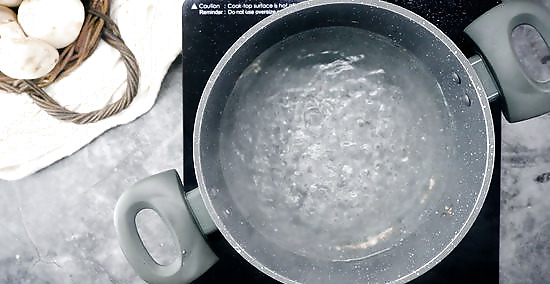
Boil a pot of water. You'll need enough water to cover the mushrooms, plus a little extra because some will boil away. If you'd like to preserve the mushrooms' color, you can add a teaspoon (5 mL) of lemon juice for each quart (L) of water.

Chop your mushrooms (optional). While your water is heating, you may chop your mushrooms in quarters or slices. Do this if the recipes you plan on using call for chopped or sliced mushrooms. While you may wash the mushrooms under running water to remove stuck-on dirt, the boiling water should clean the mushrooms during cooking.

Drop the mushrooms in the water and boil 1–2 minutes. Because the mushrooms are room temperature, the water will probably stop boiling when you add them. Wait until the water boils again, then turn off the heat after 1 or 2 minutes of boiling. Do not fully cook the mushrooms, as this may make them soggy.

Transfer the mushrooms to cold water. Prevent the heat from overcooking the mushrooms by placing them in a container of cold water. Wait until they are cool to the touch.
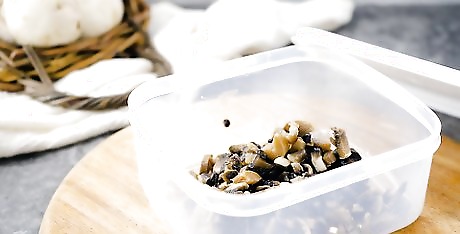
Drain the mushrooms and freeze in sealed containers. The containers should be freezer safe, sealed, and have a small amount of air inside them in case the mushrooms expand during freezing. The mushrooms should retain their quality for up to 12 months. Add the frozen mushrooms directly to the dish you are cooking. If making mushroom soup, add 20 minutes before the soup is ready.
Steaming Mushrooms for Freezing

Use this method to preserve the most flavor. Most mushrooms should be cooked before freezing to keep them firm. Raw mushrooms contain a significant amount of water, which may turn them into mush after the mushrooms are frozen and thawed. While you may use any cooking method, steamed mushrooms will retain the most flavor, preserve a moderately firm texture, and can be used in most mushroom recipes. Steamed mushrooms can be frozen for up to 12 months.
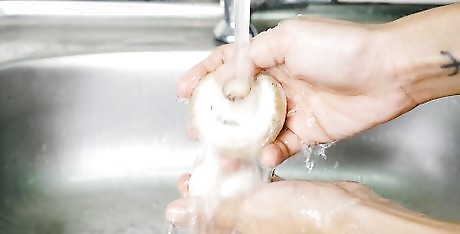
Rinse the mushrooms to remove dirt. Rinse the mushrooms under running water. Check for dirt on the surface of the cap, under the cap, and the stem. Rub dirt off with clean fingers or scrape off with a knife. You may remove the stem and wash them separately if you wish, or discard them and freeze only the mushroom caps.
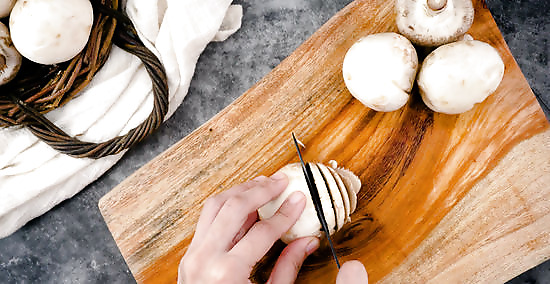
Slice or chop the mushrooms (optional). You may steam and freeze whole mushrooms, chop them into quarters, or slice them. Whole mushrooms will take a couple minutes longer to cook, but the main purpose of slicing the mushrooms is for use in recipes. Frozen mushrooms are added directly to recipes without thawing, so you may wish to cut large mushrooms into smaller pieces for easier use later. If you will be using a steamer basket or a double boiler, make sure the mushroom pieces aren't small enough to fall through the holes.

Soak the mushrooms in lemon juice and water (optional). The only purpose of this step is to preserve the mushrooms' color, which will otherwise darken during cooking. If you would like to do this, cover the mushrooms in 1 pint of water mixed with 1 tsp lemon juice (or 500 mL water and 5 mL lemon juice). Let sit 5 minutes, then remove. Experts disagree on whether soaking, or even rinsing, your mushrooms harms their texture or flavor. If you are concerned about this, you could reduce the possible effect by brushing the mushrooms with the lemon juice and water mixture instead.

Make a double boiler if you don't own one. To steam mushrooms, you'll need a way to hold the mushrooms above the surface of the water, so they only come into contact with the steam. You can use a double boiler or steamer, but it's easy to make your own as well: Select two pots. One must be able to fit completely inside the other. You can also use a steaming basket instead of the smaller pot. Use a metal ring, thick jar lid, or other heat-safe object to lift the smaller pot off the surface of the larger pot. Place the ring on the base of the pot before the water is heated, then put the smaller pot on top of it. Have a lid ready to cover the large pot. It doesn't need to be airtight, but it should trap most of the steam.

Boil 2 inches (5cm) of water in a large pot. If you have a double boiler, add this to the bottom pot. Otherwise, add it to the larger pot in the setup described above. It should only take a few minutes to boil this quantity of water.
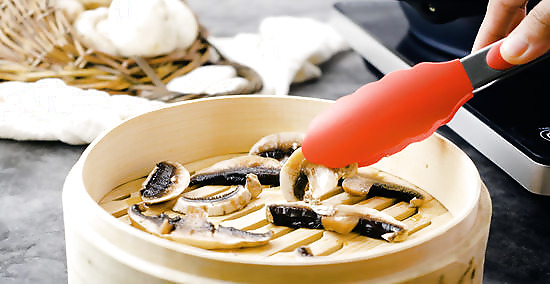
Drop the mushrooms in the smaller pot. Put them in the raised steamer basket instead if you are using one. The smaller pot should not contain water.

Cover and cook according to mushroom size. Place a lid over the pot to trap the steam and wait until the mushrooms are cooked. Most whole mushrooms will take about 5 minutes to cook, while button mushrooms or mushrooms cut into quarters will take 3 minutes 30 seconds. Slices will be ready in 3 minutes, or even less if thinly cut.

Transfer the mushrooms to a pot of cold water. The heat will continue to cook the mushrooms unless you cool them promptly. Place them in a pot or bowl of cold water until they are cool to the touch.

Drain the mushrooms well. Pour the water through a mesh or colander to drain the mushrooms. Putting the bowl of water directly in the freezer will form a mushroom popsicle, which is rarely used in recipes.

Place in sealed containers. You may use freezer bags, jars, plastic containers, or any other sealed container that won't crack at low temperatures. Leave about 1/2 inch (1.25 cm) of space between the mushrooms and the top of the container, as they may expand slightly. Seal the container to make it airtight.

Freeze for up to 12 months. Steamed mushrooms will retain their flavor and texture for up to a year. Try not to thaw mushrooms and refreeze them, as this will decrease their quality and lifespan. Add the frozen mushrooms to any recipe that involves heat, and they will thaw as they cook. Use sparingly in stir fries so as not to bring the temperature too low.
Sautéing Mushrooms for Freezing
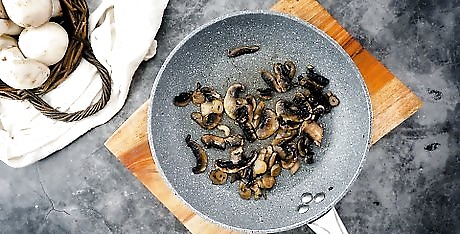
Use this method for the firmest texture or if you enjoy the flavor. This method will preserve the frozen mushrooms' flavor and texture for a shorter time than steaming and blanching. Various sources report a preservation time ranging from 1 month to 9 months, most likely varying with the type of oil or butter you use. However, this method will keep mushrooms firmer than other methods, and saves time compared to sautéing the frozen mushrooms each time you use them.

Wash and dry the mushrooms. Remove any dirt or moss from the mushrooms by running them under running water. Pat them dry afterward with a paper towel or clean cloth to prevent the water droplets from spattering the hot oil.

Slice or chop the mushrooms. You will be sautéing the mushrooms over high heat, so thick, whole mushrooms will cook on the outside but remain undercooked on the inside. Prevent this by cutting them into pieces of roughly equal size.

Heat oil in a frying pan or skillet. You'll only be partially cooking the mushrooms and finishing the process when you use them frozen in recipes. Because of this, you don't have to be too exact in your measurements. Approximately 1–2 tablespoons of oil (15–30 mL) should be enough for a medium skillet. If you would like to add more flavor, add chopped garlic, onions, or spices to the oil.

Cook the mushrooms over medium-high heat. Fry the mushrooms in the oil until almost fully cooked. This should only take 3 or 4 minutes, and result in darker, more tender mushrooms.

Let the mushrooms cool before freezing. The mushrooms should cool to room temperature before you pack them for storage. The fats in the oil or butter will degrade in the freezer faster than the mushrooms, so you may wish to store or dispose of excess oil at this time as well.

Freeze mushrooms in a sealed container. Press the mushrooms down into the container so there is no space between them to help prevent freezer burn. Mushrooms with surfaces exposed to air may change color and lose some flavor, but you should still leave a little space in the container before sealing. The mushrooms may expand during freezing, and the space allows them to do so without the risk of breaking the jar or bag. Add frozen mushrooms to recipes as-is, or thaw in a frying pan or microwave if you are using a large quantity. Take care not to cook them in the microwave, or they could become rubbery.

Finished.



















Comments
0 comment